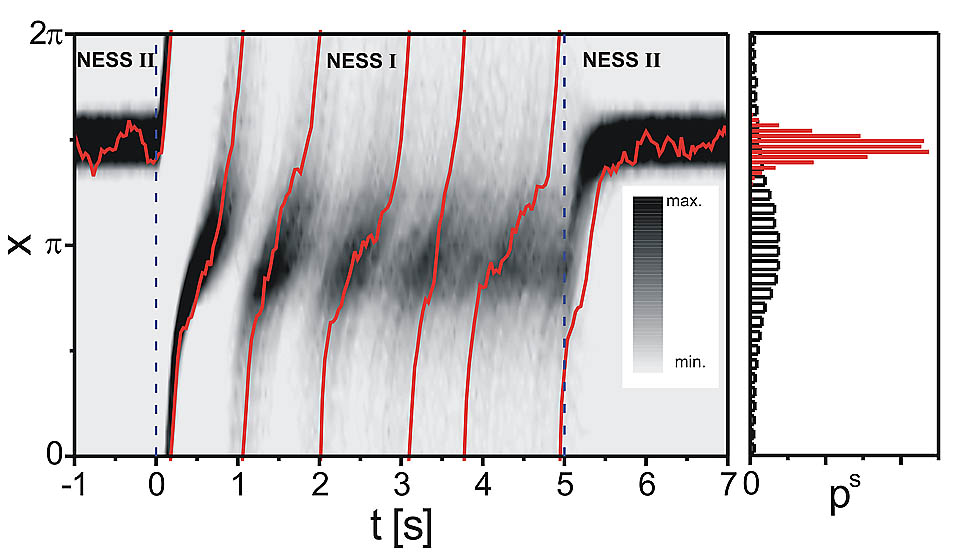Nonequilibrium relaxation

Among the huge manifold of nonequilibrium conditions, nonequilibrium steady states (NESS) are certainly the simplest conceivable situations. Since NESS are characterized by a stationary probability distribution, heat and entropy are permanently dissipated and they provide ideal conditions for fundamental studies of nonequilibrium properties. To experimentally study the relaxation process into a NESSwe use a colloidal particle which is periodically driven between two nonequilibrium states. We find that, alike to equilibrium states, a NESS is characterized by a universal relaxation time, which is independent from the initial state the relaxation starts from. Even though, the fluctuation dissipation theorem is violated under nonequilibrium conditions, the relaxation time is identical to the decay of the velocity autocorrelation function, measured in a steady state. In quantitative agreement with theoretical calculations the relaxation time strongly increases when driving the system further away from thermal equilibrium
| Relaxation of a colloidal particle into a nonequilibrium steady state |
| V. Blickle, J. Mehl, C. Bechinger Phys. Rev. E 79, 060104(R) (2009) |
